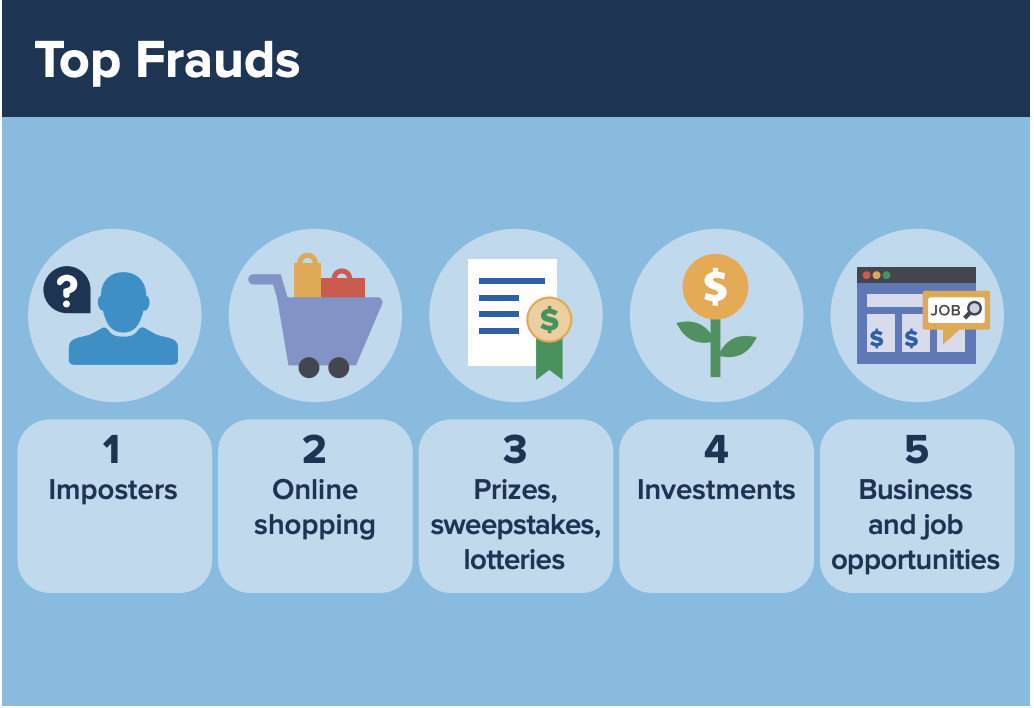The Federal Trade Commission (FTC) recently released its annual report on consumer fraud in 2022. The report highlights significant increases in the amount of money lost to scams, particularly in the areas of investment and business fraud. Bank transfers and cryptocurrency payments were commonly used to perpetrate these scams. Interestingly, the report also shows that phone-based scams continue to be prevalent, despite the growing popularity of social media. Additionally, the FTC has launched a new multi-lingual platform to assist consumers in overcoming language barriers and reporting scams.
In an Ethnic Media Services (EMS) briefing, Maria Mayo, Acting Associate Director for the Division of Consumer Response and Operations in the Bureau of Consumer Protection at the FTC, Rosario Mendez, an Attorney from the Division of Consumer and Business Education Bureau of Consumer Protection at the FTC, and Cristina Miranda, a Consumer Education Specialist from the same division, will discuss the most significant scams of 2022 and the impact they had on American consumers. They will also provide tips on how to avoid falling victim to scams and how to report them.
Maria Mayo Acting Associate Director for the Division of Consumer Response and Operations in the Bureau of Consumer Protection at the Federal Trade Commission (FTC)
Shared that this office is responsible for protecting consumers from fraud, deception, and unfair business practices. The FTC receives millions of reports from consumers each year about problems they encounter in the marketplace, such as fraud and identity theft. These reports are entered into a law enforcement database known as the Consumer Sentinel Network, and the annual Sentinel Data Book provides aggregated data on all reports received from the previous year.
In the 2022 data, the FTC saw a decrease in the number of fraud reports received compared to 2021. However, despite this decrease, consumers reported a staggering $8.8 billion in losses to fraudsters, the highest amount ever reported. Investment scams and imposter scams were the two main categories in which consumers reported losing the most money. Investment scams were the most prevalent, with consumers losing $3.8 billion, more than double the amount lost in 2021. Cryptocurrency scams were a common type of investment scam, often starting on social media, where consumers were enticed to invest in cryptocurrency to make money. Scammers often presented fake websites showing how consumers’ money had grown, leading to an average median loss of $5,000 per consumer.
Imposter scams were the second largest dollar loss reported by consumers, with losses totaling $2.6 billion. Imposter scams include business imposter scams, government imposter scams, romance scams, and scams where someone pretends to be a friend or family member. Business imposter scams saw an increase in losses in 2022, with consumers reporting losses of $660 million compared to $450 million in 2021. Romance scams resulted in losses of $496 million with a median loss of $2,000 per individual. Government imposter scams also saw an increase in median losses, with consumers losing $1,500 on average in 2022 compared to $1,100 in 2021.
The most reported fraud types were imposter scams, online shopping scams, scams related to prizes, sweepstakes, lotteries, investment scams, and business/job opportunity scams. Amazon was the most commonly impersonated business in imposter scams. Online shopping scams started on social media and resulted in the highest aggregated dollar loss of $1.2 billion. Bank transfers or payments accounted for the highest dollar losses among payment methods, with online shopping and business imposters being the top fraud categories for this payment method. Cryptocurrency was the second-highest payment method with losses totaling over $1.4 billion.
Younger adults in the 30 to 39 age range reported losing money more frequently to online shopping and investment scams and were most often contacted by scammers through social media. They also typically paid the scammers using credit cards. Older adults, 80 or older, lost the most money with a median loss of $1,600.
The 2022 Sentinel Data Book shows that older adults are particularly vulnerable to business imposter and tech support scams initiated through phone calls. Although fraud reports have decreased, consumers lost a staggering $8.8 billion to scammers, with investment and imposter scams being the primary culprits. Social media is increasingly being used to lure consumers into fraud, and scammers are frequently paid through bank transfers or cryptocurrency.
Cristina Miranda, Consumer Education Specialist from the Division of Consumer and Business Education at the Federal Trade Commission,
She announced the launch of ftc.gov/languages. This new website provides fraud and scam advice in 12 languages, reflecting the fact that scammers target individuals in their native language. The FTC recognizes the need to help all communities spot and avoid scams and has made information available in Amharic, Arabic, Chinese (both simplified and traditional), French, Hmong, Korean, Russian, Somali, Tagalog, Vietnamese, and Ukrainian. By visiting ftc.gov/languages, consumers can access valuable information on how to recognize and avoid scams.
How to Recover from Scams and Avoid Them: Tips for New Immigrants
Scammers can target anyone, especially those who are new to a country’s culture and systems. To help immigrants, the Federal Trade Commission (FTC) has created a downloadable publication called “Spotting, Avoiding, and Reporting Scams: A Fraud Handbook for Recent Refugees and Immigrants.” This handbook is available in multiple languages and includes information on how to spot scams related to job searching, immigration processes, and adapting to a new country. Additionally, there are graphics available in multiple languages that can be shared on social media to help spread awareness.
If you have fallen victim to a scam, it is important to act quickly. Contact your bank or credit card company to report any unauthorized transactions, change your passwords for any affected accounts, and file a report with the FTC at ReportFraud.ftc.gov. If you provided personal information to a scammer, consider freezing your credit report and monitoring your accounts for any suspicious activity.
It is also important to be aware of common scams targeting new immigrants. Scammers may pose as immigration officials, job recruiters, or even family members in need of money. Be wary of unsolicited emails or phone calls, and always verify the identity of the person or organization before sharing any personal information.
In 2021, the FTC analyzed data on scams reported by Latino and Black communities to better understand how scammers target different groups. The analysis revealed that scammers often target Latinos with debt collection, auto-related issues, and business opportunities. Work-at-home scams were also found to be specifically targeting Latinas. It is important to stay informed and vigilant to protect yourself from scams.
#FTC #Scammers #ConsumerFraud #InvestmentScams #ImposterScams #LanguageBarrier #ReportScams #ConsumerProtection #IdentityTheft #Cryptocurrency #BusinessFraud #SocialMediaScams #OnlineShoppingScams #PaymentMethods #TechSupportScams #AvoidScams #NewImmigrants #FraudHandbook #JobSearching #ImmigrationProcess #Adapting #SpreadAwareness #ReportFraud










